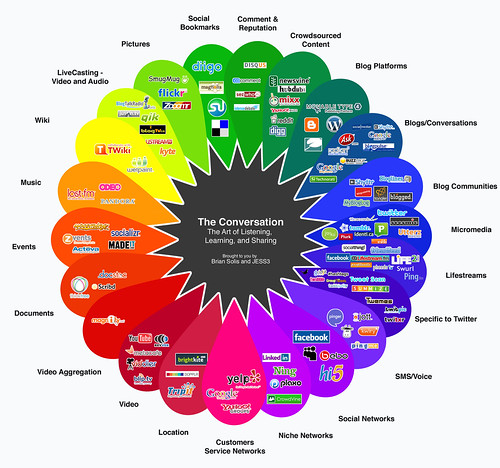Four great visual representations of the social media and Web 2.0 landscape
People often ask me how I keep track of everything that’s going on in Web 2.0 and social media and make sense of it all. The most important single tool for me is creating frameworks. The many frameworks I create (e.g. Future of Media Lifecycle, Future of Media Strategy, Trend Map 2007+ (with Richard Watson) etc. etc.) are all primarily to help me organize in my mind what’s going on. They then allow me to readily understand new developments as they emerge and how they fit into the landscape.
The release of the Conversation Prism last week made me think it’s worth providing a quick review of visual frameworks for the social media landscape.
The Conversation Prism is intended to evolve over time based on changes in both companies andchannels, which is a great idea, given the other landscapes below are static, and my framework in particular is ageing and needs rework. Another cool idea would be to provide animated frameworks that show the development and disappearance of different companies over time.
Recently I have been trying to make sense of some of the recent changes in the landscape, particularly about how the primary platform is shifting from the social network to distributed conversation. Even before the Conversation Prism came out I had decided to work on a new framework that will incorporate my latest thinking on this – hopefully out in the next couple of months!
Here are the four most interesting landscapes of companies in the social media world that I’ve come across.
Conversation Prism (August 2008) – Brian Solis and Jesse Thomas.
Social Media Starfish (November 2007) – Robert Scoble and Darren Barefoot.
Web 2.0 Landscape (September 2007) – Vincenzo Cosenza (Vincos).
Web 2.0 Framework (May 2007) – Ross Dawson.




